Kingdom Plantae Family Amaranthaceae Genus AmaranthusL. | Subfamily Amaranthoideae | |
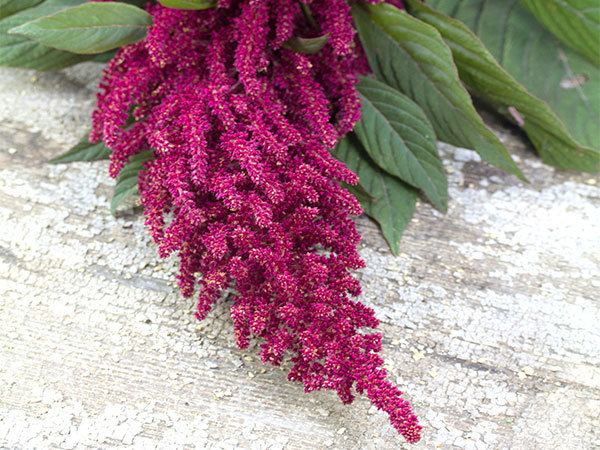 | ||
Similar Chia, Millet, Amaranth grain, Buckwheat, Water | ||
How to grow red amaranth a nutrition powerhouse superfood
Amaranthus, collectively known as amaranth, is a cosmopolitan genus of annual or short-lived perennial plants. Some amaranth species are cultivated as leaf vegetables, pseudocereals, and ornamental plants. Most of the Amaranthus species are summer annual weeds and are commonly referred to as pigweed. Catkin-like cymes of densely packed flowers grow in summer or autumn. Approximately 60 species are recognized, with Inflorescences and foliage ranging from purple, through red and green to gold. Members of this genus share many characteristics and uses with members of the closely related genus Celosia.
Contents
- How to grow red amaranth a nutrition powerhouse superfood
- Growing amaranth greens a nutrition powerhouse
- Taxonomy
- Species
- Nutrition
- History
- Seed
- Leaves roots and stems
- Oil
- Dyes
- Ornamentals
- Ecology
- Myth legend literature and music
- References
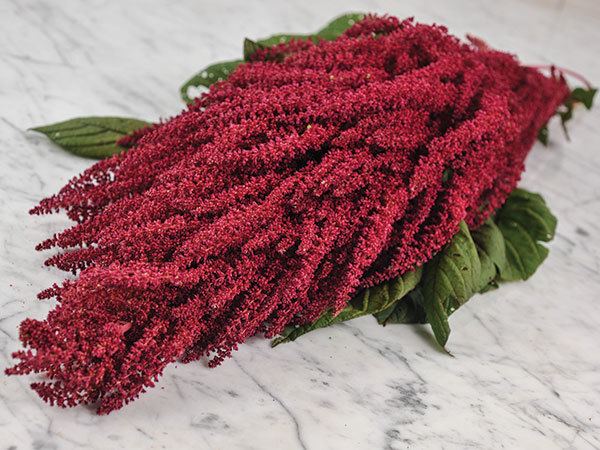
"Amaranth" derives from Greek ἀμάραντος (amárantos), "unfading", with the Greek word for "flower", ἄνθος (ánthos), factoring into the word's development as amaranth. The more accurate amarant is an archaic variant.

Growing amaranth greens a nutrition powerhouse
Taxonomy

Amaranthus shows a wide variety of morphological diversity among and even within certain species. Although the family (Amaranthaceae) is distinctive, the genus has few distinguishing characters among the 70 species included. This complicates taxonomy and Amaranthus has generally been considered among systematists as a "difficult" genus.
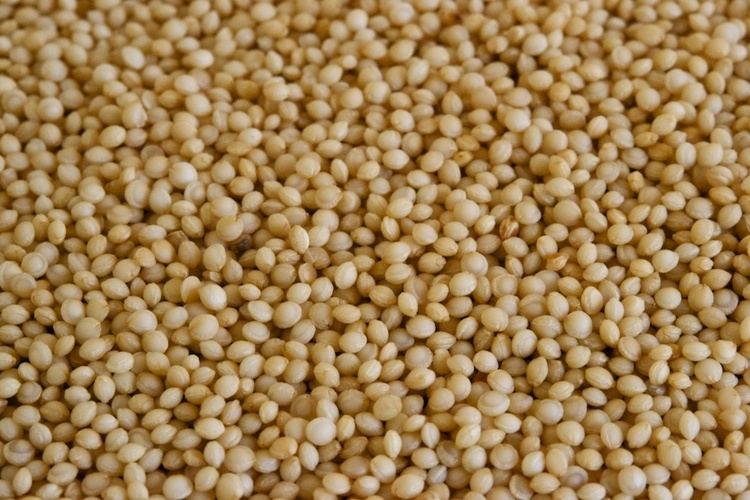
Formerly, Sauer (1955) classified the genus into two subgenera, differentiating only between monoecious and dioecious species: Acnida (L.) Aellen ex K.R. Robertson and Amaranthus. Although this classification was widely accepted, further infrageneric classification was (and still is) needed to differentiate this widely diverse group.
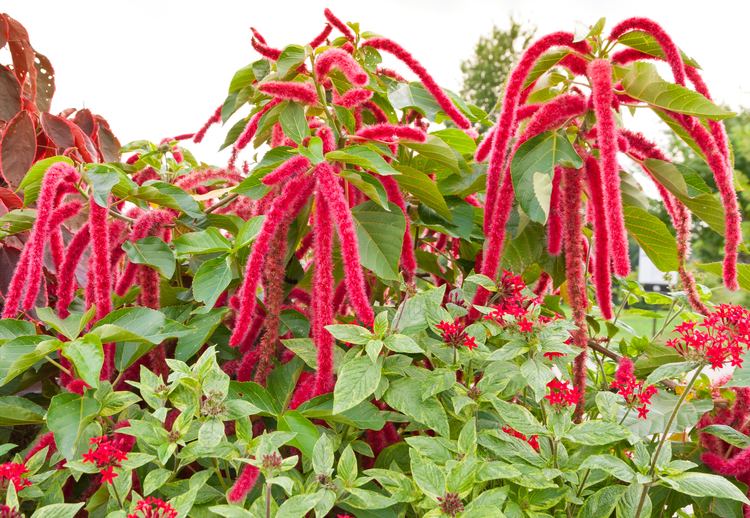
Currently, Amaranthus includes three recognized subgenera and 70 species, although species numbers are questionable due to hybridization and species concepts. Infrageneric classification focuses on inflorescence, flower characters and whether a species is monoecious/dioecious, as in the Sauer (1955) suggested classification. A modified infrageneric classification of Amaranthus was published by Mosyakin & Robertson (1996) and includes three subgenera: Acnida, Amaranthus, and Albersia. The taxonomy is further differentiated by sections within each of the subgenera.
Species
Species include:
Nutrition
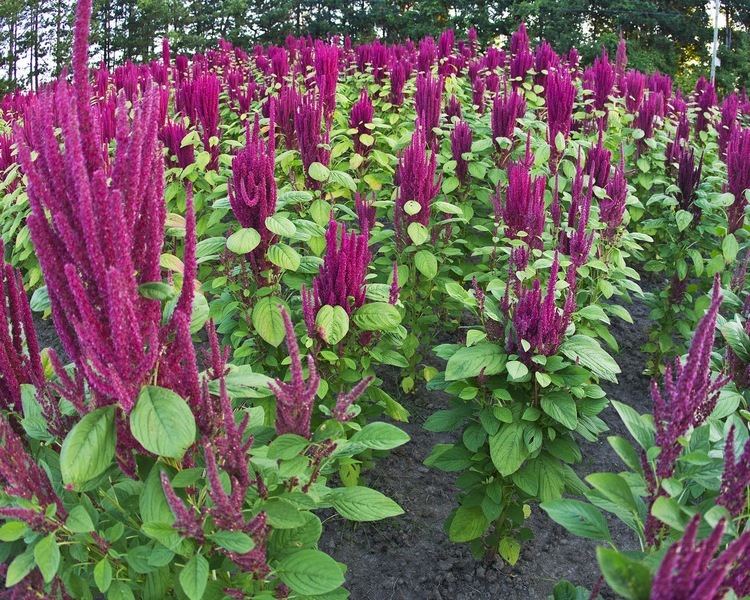
One cup (2.4 dl, 245 g) of cooked amaranth grain (from about 65 g raw) provides 251 calories and is an excellent source (20% or more of the Daily Value, DV) of protein, dietary fiber, and some dietary minerals. Amaranth is particularly rich in manganese (105% DV), magnesium (40% DV), iron (29% DV), and selenium (20% DV).
Cooked amaranth leaves are an excellent source of vitamin A, vitamin C, calcium, manganese, and folate.
Amaranth does not contain gluten, so it may be a healthy and less expensive alternative to ingredients traditionally used in gluten-free products. It has high biological value and its benefits are not limited to people with gluten-related disorders, but are applicable to the general population. Quantity and quality of proteins of amaranth are superior to those of wheat. It also contains higher concentrations of folic acid than wheat (102 µg/100 g in amaranth vs. 40 µg/100 g in wheat), and its fiber and Minerals contents are higher than those of other cereals.
Amaranth contains phytochemicals that may be antinutrient factors, such as polyphenols, saponins, tannins, and oxalates which are reduced in content and effect by cooking.
History
Known to the Aztecs as huauhtli, it is thought to have represented up to 80% of their Energy consumption before the Spanish conquest. Another important use of amaranth throughout Mesoamerica was to prepare ritual drinks and foods. To this day, amaranth grains are toasted much like popcorn and mixed with honey, molasses, or chocolate to make a treat called alegría, meaning "joy" in Spanish. Diego Durán described the festivities for Huitzilopochtli, the name of which means "hummingbird of the left side" or "left-handed hummingbird" (Real hummingbirds feed on amaranth flowers). The Aztec month of Panquetzaliztli (7 December to 26 December) was dedicated to Huitzilopochtli. People decorated their homes and trees with paper flags; ritual races, processions, dances, songs, prayers, and finally human sacrifices were held. This was one of the more important Aztec festivals, and the people prepared for the whole month. They fasted or ate very little; a statue of the god was made out of amaranth seeds and honey, and at the end of the month, it was cut into small pieces so everybody could eat a little piece of the god. After the Spanish conquest, cultivation of amaranth was outlawed, while some of the festivities were subsumed into the Christmas celebration.
Because of its importance as a symbol of indigenous culture, its gluten-free palatability, ease of cooking, and a protein that is particularly well-suited to human nutritional needs, interest in grain amaranth (especially A. cruentus and A. hypochondriacus) revived in the 1970s. It was recovered in Mexico from wild varieties and is now commercially cultivated. It is a popular snack sold in Mexico, sometimes mixed with chocolate or puffed rice, and its use has spread to Europe and parts of North America. Amaranth and quinoa are not grasses and are called pseudocereals because of their similarities to cereals in flavor and cooking.
Seed
Several species are raised for amaranth "grain" in Asia and the Americas.
Ancient amaranth grains still used include the three species, Amaranthus caudatus, Amaranthus cruentus, and Amaranthus hypochondriacus. Although amaranth was cultivated on a large scale in ancient Mexico, Guatemala, and Peru, nowadays it is only cultivated on a small scale there, along with India, China, Nepal, and other tropical countries; thus, the potential exists for further cultivation in those countries, as well as in the U.S. In a 1977 article in Science, amaranth was described as "the crop of the future". It has been proposed as an inexpensive native crop that could be cultivated by indigenous people in rural areas for several reasons:
Leaves, roots, and stems
Amaranth species are cultivated and consumed as a leaf vegetable in many parts of the world. Four species of Amaranthus are documented as cultivated vegetables in eastern Asia: Amaranthus cruentus, Amaranthus blitum, Amaranthus dubius, and Amaranthus tricolor.
In Indonesia and Malaysia, leaf amaranth is called bayam. In the Philippines, the Ilocano word for the plant is kalunay; the Tagalog word for the plant is kilitis or kulitis. In Uttar Pradesh and Bihar in India, it is called chaulai and is a popular green leafy vegetable (referred to in the class of vegetable preparations called saag). It is called chua in Kumaun area of Uttarakhand, where it is a popular red-green vegetable. In Karnataka in India, it is called harive. It is used to prepare curries such as hulee, palya, majjigay-hulee, and so on. In Kerala, it is called cheera and is consumed by stir-frying the leaves with spices and red chillies to make cheera thoran. In Tamil Nadu, it is called mulaikkira and is regularly consumed as a favourite dish, where the greens are steamed, and mashed, with light seasoning of salt, red chili, and cumin. It is called keerai masial. In Andhra Pradesh, this leaf is added in preparation of a popular dal called thotakura pappu in (Telugu). In Maharashtra, it is called shravani maath and is available in both red and white colour. In Orissa, it is called khada saga, it is used to prepare saga bhaja, in which the leaf is fried with chili and onions.
In China, the leaves and stems are used as a stir-fry vegetable, or in soups. In Vietnam, it is called rau dền and is used to make soup. Two species are popular as edible vegetable in Vietnam: dền đỏ- Amaranthus tricolor and dền cơm or dền trắng- Amaranthus viridis.
A traditional food plant in Africa, amaranth has the potential to improve nutrition, boost food security, foster rural development and support sustainable land care.
In Bantu regions of Uganda and western Kenya, it is known as doodo or litoto. It is also known among the Kalenjin as a drought crop (chepkerta). In Lingala (spoken in the Congo), it is known as L.ngalɛnga or bítɛkutɛku. In Nigeria, it is a common vegetable and goes with all Nigerian Starch dishes. It is known in Yoruba as shoko a short form of shokoyokoto (meaning make the husband fat) or arowo jeja (meaning "we have money left over for fish"). In the Caribbean, the leaves are called bhaji in Trinidad and callaloo in Jamaica, and are sautéed with onions, garlic, and tomatoes, or sometimes used in a soup called pepperpot soup. In Botswana, it is referred to as morug and cooked as a staple green vegetable.
In Greece, green amaranth (A. viridis) is a popular dish called βλήτα, vlita or vleeta. It is boiled, then served with olive oil and lemon juice like a salad, sometimes alongside fried fish. Greeks stop harvesting the plant (which also grows wild) when it starts to bloom at the end of August.
In Brazil, green amaranth was, and to a degree still is, frequently regarded as an invasive species as all other species of amaranth (except the generally imported A. caudatus cultivar), though some have traditionally appreciated it as a leaf vegetable, under the names of caruru or bredo, which is consumed cooked, generally accompanying the staple food, rice and beans.
Oil
Making up about 5% of the total fatty acids of amaranth, squalene is extracted as a vegetable-based alternative to the more expensive shark oil for use in dietary supplements and cosmetics.
Dyes
The flowers of the 'Hopi Red dye' amaranth were used by the Hopi (a tribe in the western United States) as the source of a deep red dye. Also a synthetic dye was named "amaranth" for its similarity in color to the natural amaranth pigments known as betalains. This synthetic dye is also known as Red No. 2 in North America and E123 in the European Union.
Ornamentals
The genus also contains several well-known ornamental plants, such as Amaranthus caudatus (love-lies-bleeding), a vigorous, hardy annual with dark purplish flowers crowded in handsome drooping spikes. Another Indian annual, A. hypochondriacus (prince's feather), has deeply veined, lance-shaped leaves, purple on the under face, and deep crimson flowers densely packed on erect spikes.
Amaranths are recorded as food plants for some Lepidoptera (butterfly and moth) species including the nutmeg moth and various case-bearer moths of the genus Coleophora: C. amaranthella, C. enchorda (feeds exclusively on Amaranthus), C. immortalis (feeds exclusively on Amaranthus), C. lineapulvella, and C. versurella (recorded on A. spinosus).
Ecology
Amaranth weed species have an extended period of germination, rapid growth, and high rates of seed production, and have been causing problems for farmers since the mid-1990s. This is partially due to the reduction in tillage, reduction in herbicidal use and the evolution of herbicidal resistance in several species where herbicides have been applied more often. The following 9 species of Amaranthus are considered invasive and noxious weeds in the U.S and Canada: A. albus, A. blitoides, A. hybridus, A. palmeri, A. powellii, A. retroflexus, A. spinosus, A. tuberculatus, and A. viridis.
A new herbicide-resistant strain of Amaranthus palmeri has appeared; it is glyphosate-resistant and so cannot be killed by herbicides using the chemical. Also, this plant can survive in tough conditions. This could be of particular concern to cotton farmers using glyphosate-resistant cotton. The species Amaranthus palmeri (Palmer amaranth) causes the greatest reduction in soybean yields and has the potential to reduce yields by 17-68% in field experiments. Palmer amaranth is among the "top five most troublesome weeds" in the southeast of the United States and has already evolved resistances to dinitroaniline herbicides and acetolactate synthase inhibitors. This makes the proper identification of Amaranthus species at the seedling stage essential for agriculturalists. Proper weed control needs to be applied before the species successfully colonizes in the crop field and causes significant yield reductions.
Myth, legend, literature and music
The word amaranth comes from the Greek word amaranton, meaning "unwilting" (from the verb marainesthai meaning "wilt"). The word was applied to amaranth because it did not soon fade and so symbolized immortality. "Amarant" is a more correct, albeit archaic form, chiefly used in poetry. The current spelling, amaranth, seems to have come from folk etymology that assumed the final syllable derived from the Greek word anthos ("flower"), common in botanical names.
An early Greek fable counted among Aesop's Fables compares the rose to the amaranth to illustrate the difference in fleeting and everlasting beauty:
An amaranth planted in a garden near a Rose-Tree, thus addressed it: "What a lovely flower is the Rose, a favourite alike with Gods and with men. I envy you your beauty and your perfume." The Rose replied, "I indeed, dear Amaranth, flourish but for a brief season! If no cruel hand pluck me from my stem, yet I must perish by an early doom. But thou art immortal and dost never fade, but bloomest for ever in renewed youth."
John Milton's epic Paradise Lost gives amaranth an illustrious neighbour:
Samuel Taylor Coleridge, in Work Without Hope (1825), also refers to the herb, likely referencing Milton's earlier work (ll 7–10 excerpted):
Percy Bysshe Shelley refers to the herb in his poem "Bereavement" (lines 13–16 excerpted):
In his dialogue "Aesop and Rhodopè", published in 1844, Walter Savage Landor wrote:
Joachim du Bellay mentioned the herb in his "A Vow to Heavenly Venus", ca. 1500:
In the fourth book of Endymion (1818), John Keats writes:
In ancient Greece, the amaranth (also called chrysanthemum and helichrysum) was sacred to Ephesian Artemis. It allegedly had special healing properties, and, as a symbol of immortality, was used to decorate images of the gods and tombs. In legend, Amarynthus (a form of "Amarantus") was a hunter of Artemis and king of Euboea; in a village of Amarynthus, of which he was the eponymous hero, there was a famous temple of Artemis Amarynthia or Amarysia (Strabo x. 448; Pausan. i. 31, p. 5). The Chinese used amaranth widely for its healing chemicals, treating illnesses such as infections, rashes, and migraines. "Amarantos" is the name of a several-centuries-old popular Greek folk-song:
In the poem "The Hound of Heaven" (1893), Francis Thompson compares God's love to "an amaranthine weed..."
The Swedish metal band Amaranthe is named for the plant.
The fictional character St John Clarke in Anthony Powell's novel sequence A Dance to the Music of Time is the author of Fields of Amaranth, a novel.
